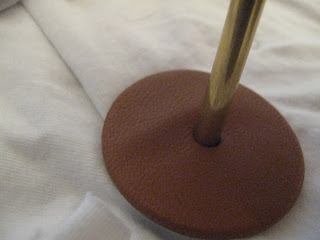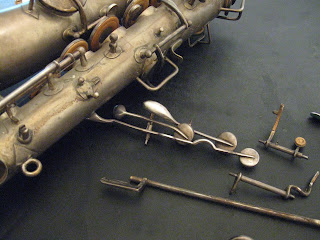In the past, since metal backed pads were not available, I used modern pads with the resonators removed and shimmed the pads with cardboard and paper. This is how flute pads are installed and works well. The process requires installing the shims under the pad, attaching the key to the horn and checking how the pad seals with a leak light. If you find a leak, you remove the key, unsnap the pad and add/adjust the shims. On a flute this is pretty straightforward since all of the keys are rather accessible, but on a saxophone it is more difficult. This is especially true of the keys on the right and left hand stacks: C, B, A, G and F, E, D.
While looking for pads online if found musicmedic.com which offers a couple of alternatives. The first is replica metal backed pads made specifically for Buescher saxophones. The second involves floating the pads in with shellac and the horn's snap-in resonators. A description of this technique can be found here.
Because of the difficulties mentioned above, I decided try floating the pads in with shellac.
I ordered standard leather pads without resonators. Therefore, all I will have to to is widen the central hole so that the pads will fit over the snap in the tone hole.
MusicMedic offers full pad sets. I was skeptical, but all but one of the pads fit. This was not an issue, however, since I had ordered extras for other horns. Furthermore, they guarantee the pad sizes and even will send you several replacements if necessary.
I used a small tube to cut a wider hole in the center of the pad.
Shellac applied to the back of the pad.
Pads installed...



































